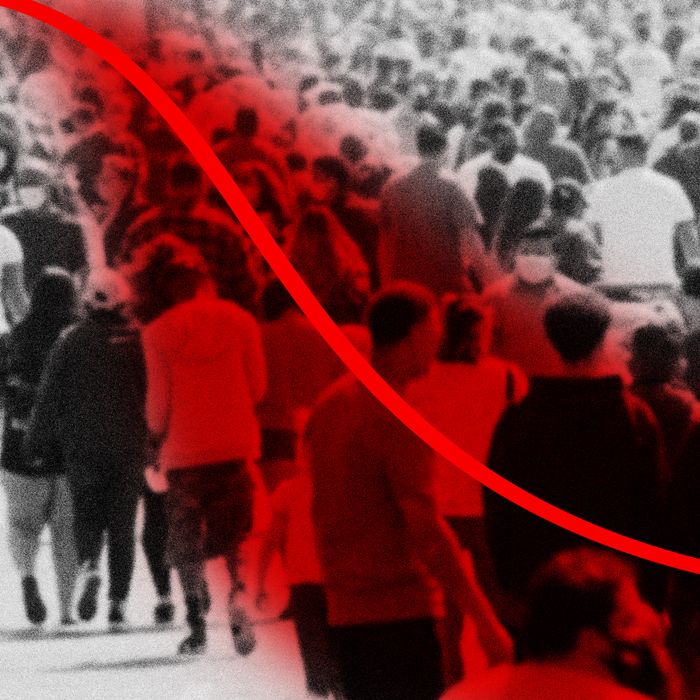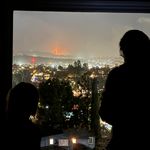
While everyone’s excited for “hot vaxx summer,” a reminder: Americans are still dying of COVID. Not in the same numbers as during last winter’s horrific peak, but still at an agonizing clip, with more than 700 fatalities a day on average. In other words, tens of thousands of otherwise healthy people walking around today will die of it in the months ahead.
Sure, there are plenty of reasons to feel optimistic. We now have highly effective vaccines, and close to half the adult U.S. population has gotten at least one dose, conferring a high degree of protection from the virus. Given that a third or more of the country may have built up immunity through already getting infected, that means we’re in striking distance of herd immunity, which will gradually drive new infections to sufficient rarity that the pandemic will effectively be over nationally. “We have reason to believe we’ll be in a good place by July,” says Justin Lessler, an infectious-disease epidemiologist at Johns Hopkins.
But it’s not at all clear how we’ll get there. After an unexpectedly successful rollout of the Pfizer and Moderna vaccines, uptake is now slowing, with many locations now having more doses than people taking them. Meanwhile, new variants of concern are emerging and spreading. One of them, B.1.1.7, first appeared around the New Year and now constitutes the majority of new infections in the United States.
“We’re in a footrace between the vaccine and the variants,” says Columbia University disease modeler Jeffrey Shaman. How that race plays out will make the difference between a gradually weakening pandemic that yields relatively few additional fatalities and one that drives the death toll to another spike. The experience of Michigan, where cases spiked eightfold between February and April even as overall caseloads in the U.S. were broadly declining, could be played out again and again in pockets of vulnerability.
Finding the right path is not an easy question, even for the experts. There’s a fundamental principle in control-systems engineering that in order to effectively manage something, you need to have a model of how it behaves. But from the beginning of the pandemic, researchers have struggled to pin down exactly what the virus is doing.
Part of the problem is the nature of the disease. Modeling COVID is fundamentally different from modeling, say, wildfires, where researchers who track the spread of a blaze can stream data from networked sensors into their supercomputers in real time. With COVID, some of the most important processes are invisible. Infected people can walk around for days spreading the virus before anyone even knows they’re sick. And even today, more than a year after the disease emerged, we still don’t fully understand all the different ways it can pass from one person to another. How much more likely is the disease to spread if you sit students three feet apart rather than six? If you reduce restaurant seating by 55 percent versus 33 percent? No one really knows. “At the microscale process level, right now, the data are just not there,” says Shaman.
Instead, COVID researchers have to infer what the disease is doing and make probabilistic estimates of how it will spread based on assumptions about the pace of vaccination, the infectiousness of variants, the safety measures that the public is carrying out, and so on. This technique can be reasonably effective when the infection rate is changing slowly but has proven woefully inadequate in the face of a sudden acceleration, such as the one that took place last November. At a time when about 40,000 people per day were getting sick, modelers forecast that that rate would hold steady for the next four weeks. Instead, infections soared past 105,000 per day and kept climbing into the new year. “We’ve seen the limitations of what these models can do,” says Nick Reich, a professor of biostatistics and epidemiology at UMass Amherst. “At these moments of change, unfortunately, they have not been as accurate at these moments where we really want them to be.”
One of the problems is the high degree of randomness of the coronavirus, what experts call “overdispersion” — the fact that the disease is transmitted disproportionately by superspreaders. As a result, a previously sluggish outbreak can suddenly spike. A famous example occurred early in the pandemic in South Korea, where a handful of cases had not led to much transition until a particular woman caught it and then attended several church gatherings and went to a buffet lunch at a hotel. The authorities eventually traced more than half of all the country’s cases back to that single individual.
If that one person had behaved differently, the course of the pandemic in South Korea might have played out differently. And that same thing is true everywhere. “When people look back at epidemics and pandemics, they’re very apt to attribute reason to everything that happens,” says Lessler. “It’s easy to look at the New York City surge last spring and say, ‘New York has a lot of international travel, there’s the subway, there’s a lot of high density, of course it was going to happen.’ But if that were the case, why wasn’t Chicago like that? Why wasn’t Boston? There’s a large element of random chance. Maybe somebody got on a subway one day when they were shedding virus like mad. We’ll never know. So I think we need to be humble and cognizant of the fact that, you know, when we see an epidemic, we’re really only seeing one realization of that epidemic.”
On a computer, researchers can run their models over and over again to see the different ways they can play out, a technique called “ensemble forecasting.” This can provide not only a sense of how things are most likely to pan out, but also point to outlier possibilities that might not be so obvious. Another form of ensemble forecasting is to pool together the results of a number of different models. Lessler at Johns Hopkins is running a project called the COVID-19 Scenario Modeling Hub that combines the results of models run by six teams at five universities.
For the most recent run, conducted in March, each team was asked to run six-month scenarios based on different assumptions: whether vaccination rates are high or low, and whether the public continues to use masks and social distancing or gives them up prematurely. The goal was not to provide a forecast of what will happen but to suggest “optimistic and pessimistic views of what might happen in the future, to help people plan,” Lesslers says.
The scenarios his contributors came up with mostly jibe with the generally hopeful feeling that’s prevailing these days. “In most of the models we see either a leveling off of cases or a mini bump, and then everything goes down to essentially nothing around mid- to late-summer,” Lessler says. But there was a huge discrepancy in the total number of deaths between the best-case and worst-case scenarios. The death toll today is approximately 575,000. The ensemble scenario projected 628,000 total U.S. deaths if vaccination was widely accepted and people maintained a moderate use of masks and social distancing, versus 776,000 deaths if vaccination remained low and people stopped masking.
To be clear, these projections are not intended as numerical predictions of how many will die, but rather a relative indication of the impact these factors could have. Fortunately the latest short-term forecasts put out by the CDC are looking considerably better than even the more optimistic scenarios modeled a month ago. But the point they make remains valid. Until vaccines and acquired immunity drive down the number of people who can spread the virus, it will continue to spread, and a percentage of those infected will die. “Tens of millions of people are still fully susceptible,” Reich says. “Everyone’s itching to get back to normal, but I think it’s weeks too early. I think all the warnings for us to not let down our guard right now are really well founded because there’s still a lot that could go wrong.”
Remember the idea of flattening the curve? It applies at the end of a pandemic as much as it did at the beginning. “We’re beyond the hump,” says Lessler, “but if it’s a perfectly symmetric curve, we’re going to see as many people infected and die on the downside as you did on the upside. If we flatten the curve more slowly, we could see hundreds of thousands more deaths. If we accelerate the process, then we don’t have to see those deaths.”
































